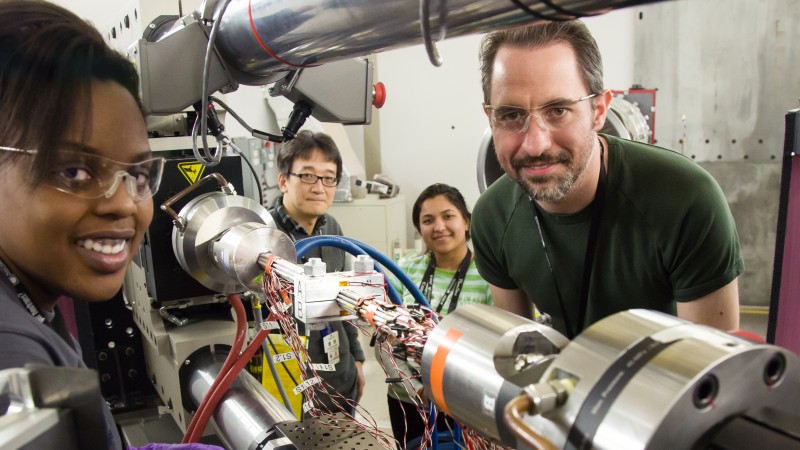A team of researchers led by Cev Noyan from Columbia University is conducting experiments at VULCAN, SNS beam line 7, as part of an ongoing study of suspension bridge cable design. Shown here are Janelle Mills, Seung-Yub Lee, Srishti Goel, and Adrian Brügger (left to right), from Columbia University, examining a wire bundle they are testing at VULCAN. Not shown are principal investigator Cev Noyan from Columbia University and Amine Oueslati from the University of Maryland.
Suspension bridge cables are made up of parallel wire strands bundled together. Moisture, local defects in the wire, and contaminants can cause corrosion and cracking in the wire. The team is using neutron diffraction to understand the effects of these breaks on the overall strength of the cable. These experiments will help quantify the effect of mechanical interference of the outer wires with the central wire on the strain transfer to a broken wire. Essentially, they want to find out if there’s a break in one of the hundreds of wires that makes up a cable, at what distance from the break does the wire begin to carry the load due to friction and wire twist.
Using neutron diffraction allows for nondestructive study of the wires, and thus more accurate measurements of the wire strain. Other methods of making these measurements, like adding sensors to the wire, disrupt the contact mechanics of the whole system. Additionally, VULCAN offers a unique environment for their experiment where the team can apply torsion to the wire specimen, twisting it to represent the natural curving that the wires exhibit as a result of coiling the cables during the manufacturing process.
This research was funded through grant #1233885 from the National Science Foundation.
Learn more about this research team: http://carleton.columbia.edu/suspension-bridge-cable-monitoring
Related Videos:
Image credit: Genevieve Martin/ORNL.





